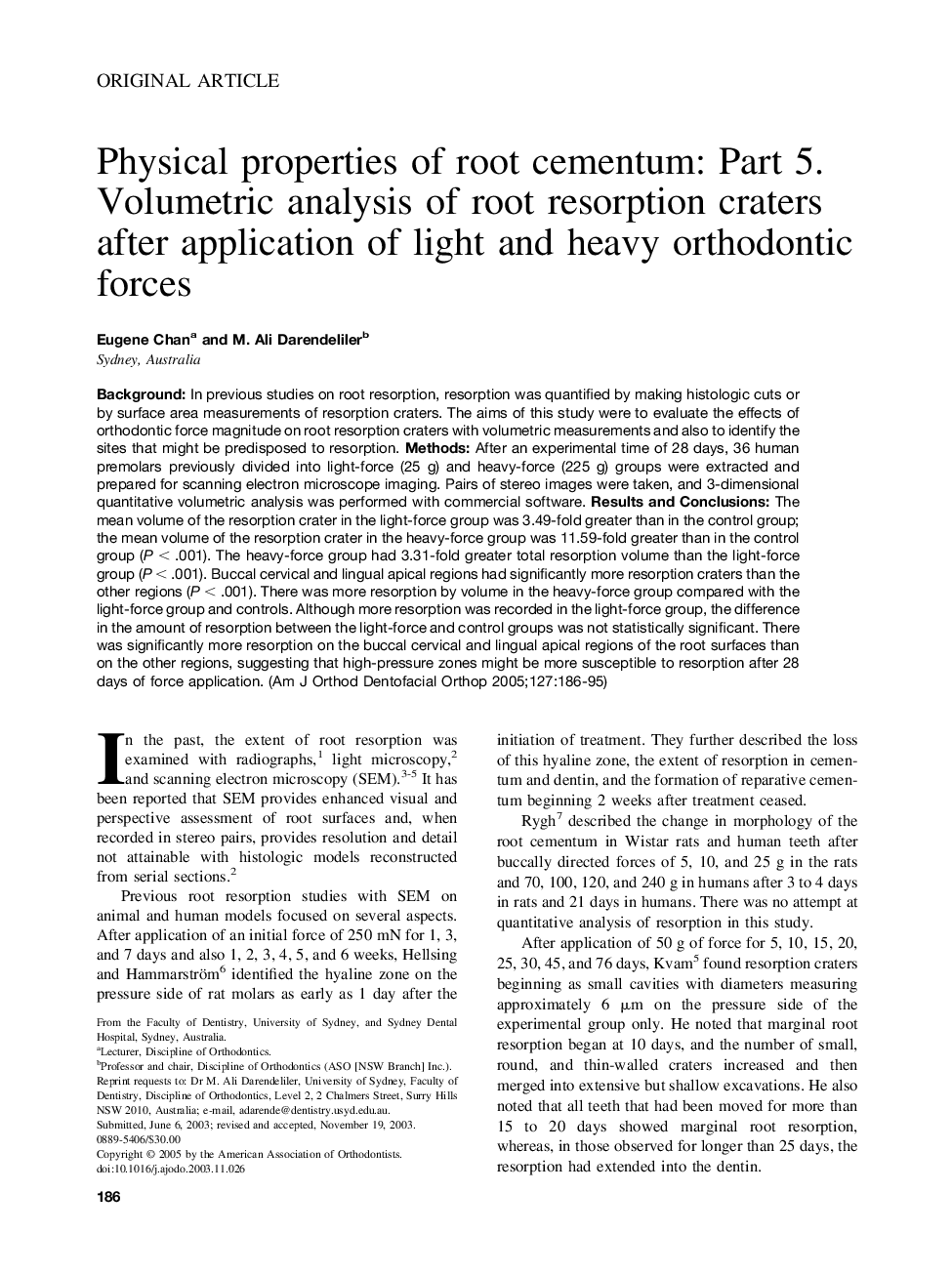| Article ID | Journal | Published Year | Pages | File Type |
|---|---|---|---|---|
| 9993094 | American Journal of Orthodontics and Dentofacial Orthopedics | 2005 | 10 Pages |
Abstract
Background: In previous studies on root resorption, resorption was quantified by making histologic cuts or by surface area measurements of resorption craters. The aims of this study were to evaluate the effects of orthodontic force magnitude on root resorption craters with volumetric measurements and also to identify the sites that might be predisposed to resorption. Methods: After an experimental time of 28 days, 36 human premolars previously divided into light-force (25 g) and heavy-force (225 g) groups were extracted and prepared for scanning electron microscope imaging. Pairs of stereo images were taken, and 3-dimensional quantitative volumetric analysis was performed with commercial software. Results and conclusions: The mean volume of the resorption crater in the light-force group was 3.49-fold greater than in the control group; the mean volume of the resorption crater in the heavy-force group was 11.59-fold greater than in the control group (P < .001). The heavy-force group had 3.31-fold greater total resorption volume than the light-force group (P < .001). Buccal cervical and lingual apical regions had significantly more resorption craters than the other regions (P < .001). There was more resorption by volume in the heavy-force group compared with the light-force group and controls. Although more resorption was recorded in the light-force group, the difference in the amount of resorption between the light-force and control groups was not statistically significant. There was significantly more resorption on the buccal cervical and lingual apical regions of the root surfaces than on the other regions, suggesting that high-pressure zones might be more susceptible to resorption after 28 days of force application.
Related Topics
Health Sciences
Medicine and Dentistry
Dentistry, Oral Surgery and Medicine
Authors
Eugene Chan, M. Ali Darendeliler,
